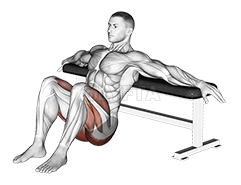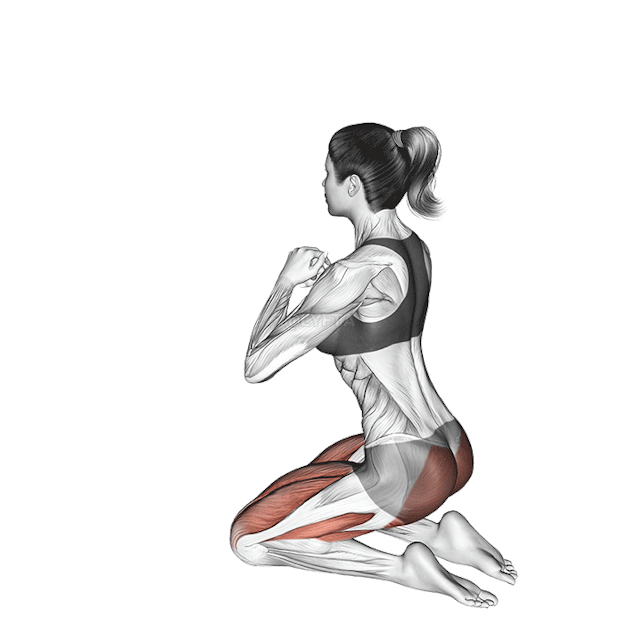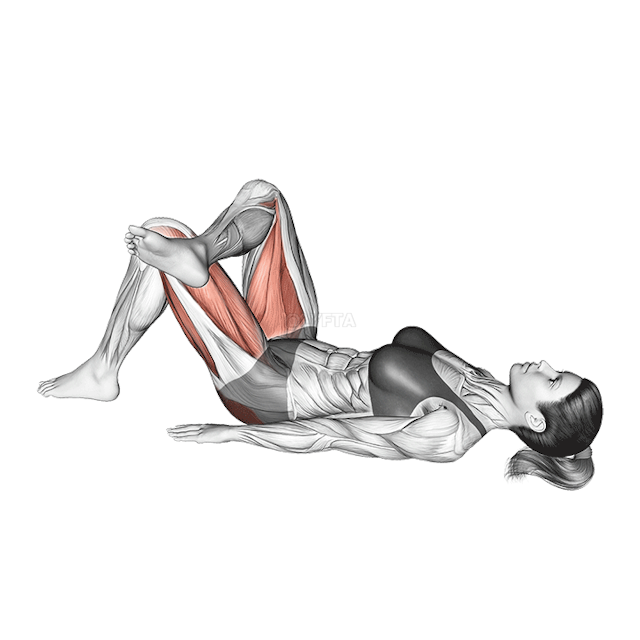
Pelvic Tilt
Exercise Profile
Related Exercises:
Introduction to the Pelvic Tilt
The Pelvic Tilt is a gentle exercise that primarily strengthens the lower abdominal muscles and improves the flexibility of the lower back, contributing to better posture and reduced back pain. It's ideal for individuals of all fitness levels, particularly those with sedentary lifestyles or those recovering from back injuries. People would want to do this exercise to enhance their core stability, alleviate lower back discomfort, and improve overall body alignment.
Performing the: A Step-by-Step Tutorial Pelvic Tilt
- Keep your arms by your sides, palms facing down.
- Slowly tighten your abdominal muscles, pushing your lower back into the floor, and tilt your pelvis upward.
- Hold this position for about 10 to 15 seconds, remembering to breathe normally throughout the exercise.
- Gradually relax your muscles, lowering your pelvis back to the starting position, and repeat the exercise for the desired number of repetitions.
Tips for Performing Pelvic Tilt
- Engage Your Core: Before you begin the tilt, make sure to engage your core. This means tightening your abdominal muscles as if you're bracing for a punch. This action helps protect your lower back and also ensures that the right muscles are doing the work.
- Slow and Controlled Movement: Avoid rushing through the exercise. The pelvic tilt should be a slow, controlled movement. This not only helps you maintain correct form but also ensures that you're effectively working the targeted muscles.
- Avoid Overarching Your Back: A common mistake is to overarch the back during the exercise. This can lead to strain and injury. Instead, focus on gently til
Pelvic Tilt FAQs
Can beginners do the Pelvic Tilt?
Yes, beginners can definitely do the Pelvic Tilt exercise. It's a gentle exercise that focuses on strengthening the lower abdominal and pelvic muscles. It's often recommended for those with lower back pain or for women recovering after childbirth. As with any new exercise, it's always a good idea to start slow and ensure you're using proper form to avoid injury. If you're unsure, it may be helpful to have a physical therapist or trainer guide you through the exercise initially.
What are common variations of the Pelvic Tilt?
- Posterior Pelvic Tilt involves tucking your pelvis under, engaging your core and glutes, which can help in strengthening your lower abdominal muscles and relieving lower back pain.
- Lateral Pelvic Tilt is a side-to-side movement, where one hip is raised higher than the other, which can help improve your balance and body coordination.
- Seated Pelvic Tilt is a variation performed while sitting on a chair or stability ball, which can help improve your posture and strengthen your core muscles.
- Supine Pelvic Tilt is done while lying on your back, which can help in alleviating back pain and strengthening your pelvic muscles.
What are good complementing exercises for the Pelvic Tilt?
- The Dead Bug exercise is another excellent complement because it targets the core muscles, including the lower back and hip flexors, which are vital for maintaining the proper form and effectiveness of the Pelvic Tilt.
- The Cat-Cow Stretch is beneficial as it promotes flexibility and strength in the lower back and pelvic muscles, which can improve the range of motion and effectiveness of the Pelvic Tilt.
Related keywords for Pelvic Tilt
- Pelvic Tilt exercise
- Body weight exercises for hips
- Waist targeting exercises
- Pelvic Tilt workout
- Body weight workout for waist
- Hip strengthening exercises
- Exercises for pelvic tilt
- Waist slimming exercises
- Body weight hip exercises
- Pelvic Tilt for waist shaping









